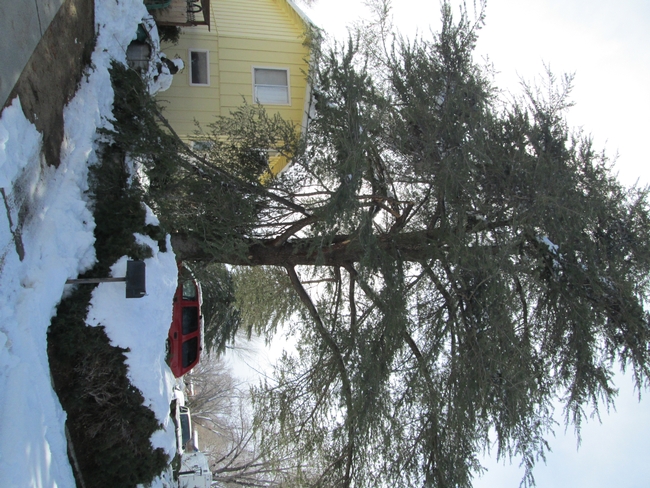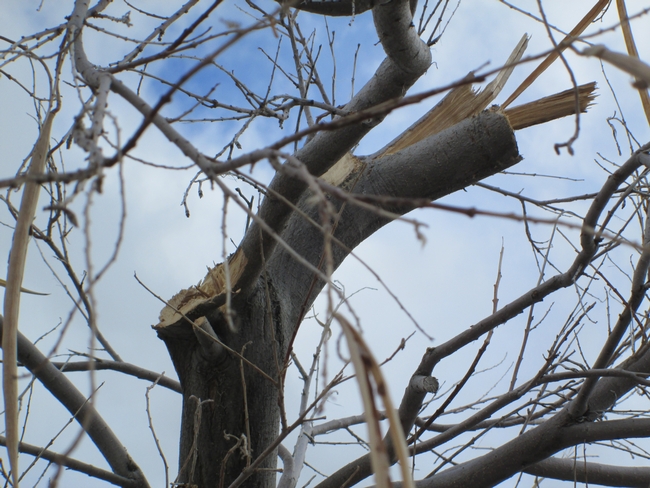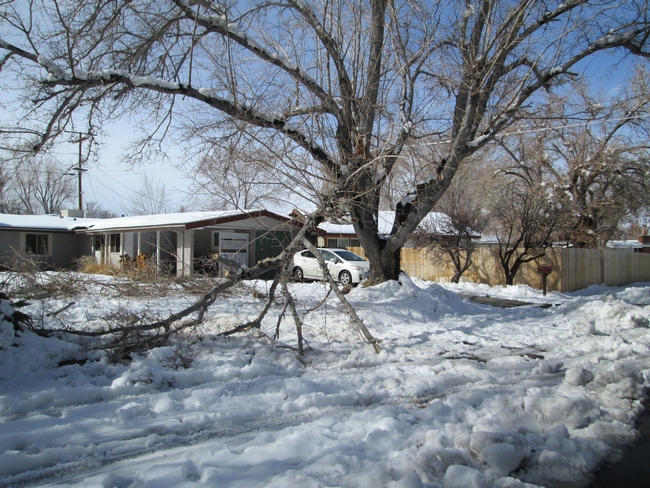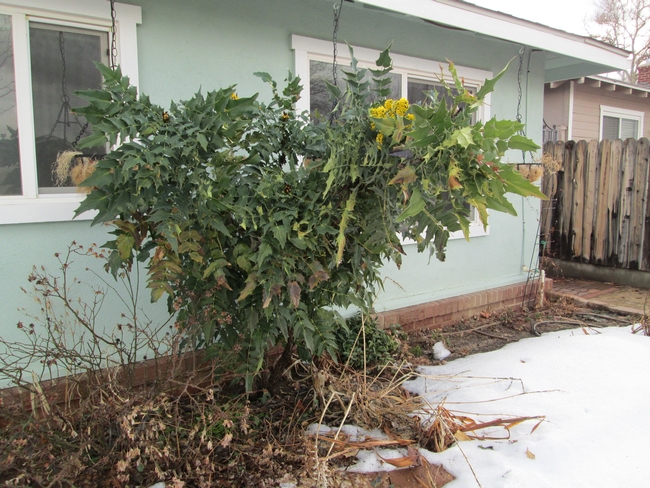As the snow melts and waters recede from our recent series of storms most gardeners are looking at a rather sorry landscape with browned plants, torn tree limbs, collapsed shrub branches, and sodden perennials. One itches to tidy everything up and restore order, but how does one tackle such a large task?
Firstly, do an inventory of damage, taking photographs of any major damage, and then make a list of priorities.

Many trees that were originally planted in tract housing frontages in the 1960's are now 60 years old and have suffered abuse from improper pruning and neglect. In the area where I live, mulberries and ash trees were planted extensively, and repeated topping has caused many of them to produce poorly attached limbs which failed with the weight of snow. In one short road 5 mulberry trees and a cedar lost large branches!
Tree safety is of major importance, so look up and note any torn limbs that might pose danger to the public or yourself. If they are large, out of reach, dangling, or hanging over the highway, a roof, or path their removal is a job for a certified arborist. Often these are in short supply after a storm, so move vehicles away and cordon off the area using warning tape or cones until you can get professional help.

Smaller limbs can be cut back to the main trunk of the tree or to a strong lateral branch replacing the tear with a neat saw cut.
Shrubs and bushes were beaten down by the weight of snow, and if this was not removed hastily the branches will often remain bowed. Some plants seem to have the ability to right themselves but many will need staking or tying back to a strong stem. I have a large euonymus which fell apart with the first snow, the branches lying on the ground, but bit by bit it regained its previous form and the remaining holes in the canopy can be closed with some judicious tying-in support.
Upright plants like nandinas or mahonias may need staking, or else removal of damaged stems at ground level to enable healthy new stems to grow during the summer.
Do not be in a hurry to prune frost damaged plants such as figs, ornamental sages, and roses, but wait until the full extent of the damage becomes apparent after new growth begins in the warmer weather and then choose a strong shoot to prune back to.
Many low growing perennial plants with basal leaves that have died or become a soggy mess, such as strawberries should be cleaned up. Removing dead and decaying leaves and other matter from the crowns, leaving only healthy growth lessens the risk of fungal damage and rot setting in. However with some plants it may be necessary to add protection in the event of a late frost.
Waterlogged soils can easily become very compacted if walked on or driven over by machines, so it is far better to keep off the garden altogether until the soil has had time to dry out.
The sun will shine again! Crocuses began blooming as soon as the snow melted and daffodils are full of promise so we have the potential for a wonderful growing year if we give our poor battered plants a little help.

